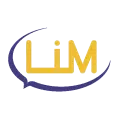Certified Translator and the Process of Translation
Translation is the process of rendering written from one language to another, while interpretation means translating spoken words. Both the translation of written material and interpretation of the spoken word are complex processes that require linguistic proficiency, cultural awareness, and subject matter expertise to ascertain complete accuracy in every translation.
Take a closer look at the spoken word and written translation process and learn about the extensive steps involved.
Translation (Written Word)
The process of translating written text begins with the translator receiving the source material that needs to be translated. The source material can come in different forms, including a physical document, a digital file, or a website. The certified translator in Canada will then read through the source material to understand the content and determine the number of potential challenges that can emerge.
- Preparation and Research
Once the translator has a basic understanding of the content, they can begin to conduct more thorough research on any terminology or concepts that they are not familiar with. This may involve consulting reference materials, such as dictionaries or encyclopedias, or utilizing the knowledge of the client, who is often the subject matter expert, or the subject matter experts puts them in contact with one contacting experts of the subject matter being translated for clarification.

- Translation
After the preparation and research stage has been completed, the translator will begin translating the text at hand, which involves rendering the source material into the target language while maintaining the intended meaning and tone of the original content. It also can be necessary for the translator to decide how to translate certain words or phrases based on the context and subject matter of the written text because different languages often have multiple ways of translating and saying something. Because of this, the translator must have a firm grasp of the context of what they are translating in order to be able to choose the best option to match the material source. Although decisions on how to convey translations are for professional translation only, certified translators must translate the written text word-for-word.
- Formatting and Delivery
When the translator completes the translated text’s necessary editing, they will format the written material to match the original source material as closely as possible. Such action may look like adjusting the layout or formatting of the translated material to ensure that it looks and reads like the original source material. Finally, the translator will deliver the translated material to the client in the requested format, whether a physical document, a digital file, or otherwise.
Interpretation (Spoken Word)
The process of interpreting oral speech is similar to the process of translating written text but with some key and variable differences. Instead of working with written documents, the interpreter must listen to the original speaker and interpret their words in real-time, which can take a lot of diligence and effort.
- Interpreting and Transcribing
The first step in interpreting oral speech consists of listening to the original speaker and taking notes in special shorthand to help them remember. More so, consecutive interpreters only interpret a sentence or two at one time, while simultaneous interpreters study the notes and material in advance and interpret at the same time as the speaker. The interpreter equipped to perform this task may have an arsenal of tools to assist them in this process, such as a computer or a notebook. The interpreter will utilize resources, education and experience to capture as much of the original speech as possible to avoid any miscommunications of the message that is being delivered.
- Interpreting and Delivery
Once the steps of interpretation are complete, the interpreter will deliver the interpretation of the speech to the target audience. This may involve interpreting the speech in real-time for a live audience, such as language translations for a court of law, or recording the translated speech for playback later. Whatever the situation entails, the interpreter should always aim to interpret the translated speech in a manner that accurately articulates the intended message of the original content. Although for certified interpreters, the process is a bit different as they must interpret word-for-word what is said and the meaning cannot be changed or modified in any way, such as for legal proceedings. For a community setting, such as a conference, the interpreter would convey the meaning of the speech instead of the direct translation.
Conclusion
The translation and interpretation process with a certified translator in Canada involves a series of steps essential in ensuring accurate, effective, and professional translations of both oral and written text. From initial analysis and preparation to translation, review, quality assurance, and delivery, each step is critical in producing high-quality translations that meet the needs and expectations of whoever requires translation and interpretation services.
At Languages in Motion Ltd., our goal is to bring the world together through professional translation and interpretation services. With access to over 200 languages, including American Sign Language, French, Spanish, Portuguese, Chinese, and Arabic, we can help individuals, families, and businesses communicate more clearly than ever before. Our certified translators and interpreters have worked in numerous industries, including the Public Sector (Police, Healthcare, Court, Education, and Government & Municipalities), Healthcare, Finance, Local and International Law Firms, Marketing, Insurance Companies and Private/Independent Medical Clinics, Law and Order, and Immigration. Our experience, passion for delivering results, commitment to clients, and enthusiasm for building relationships are why we are recognized as the best in the language services industry. Contact our team of certified translators and interpreters from Toronto to Winnipeg to Calgary and Vancouver today at 1-888-556-5541.

